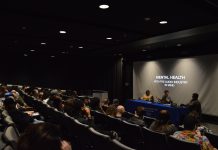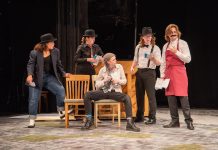Many of this year’s holiday celebrations have been followed by spikes in COVID-19. Students hoping to celebrate the Thanksgiving holiday can take steps to limit the risk of contracting or spreading COVID-19.
Memorial Day and Fourth of July celebrations were followed by spikes in COVID-19. Associate Vice President of Student Affairs and Dean of Students John Buck said Webster University cautioned students not to have large gatherings ahead of Labor Day. He said the forewarning was seen as successful, as the university did not experience a rise in cases. Then, Halloween came.
“We had some of our students that went out to Halloween parties I know. I’m not going to tell you much more than that but I know,” Buck said. “I think to some degree we’ve let our guard down.”
Now, Thanksgiving is just over a week away.
Buck and Mary Ann Drake, a professor in the Department of Nursing, are encouraging students to be cautious and vigilant going into the holiday. There are many steps students can take to limit the risk of them or their loved ones contracting COVID-19.
For students who plan on returning home or gathering with extended families, Drake said they should follow the guidelines health officials like the Centers for Disease Control and Prevention (CDC) have laid out for Thanksgiving.
Drake said these guidelines include limiting the amount of time spent at the dinner table, separating tables by households and holding the event outside or with open windows to promote air circulation. The CDC also recommends that each household bring their own meal and tableware.
“That’s what they are saying so theirs are the most strict at this point but they are probably the most accurate,” Drake said.
Drake suggested students check their local health department’s website for the number of cases if they want to learn more about the risk of contracting COVID-19. Along with area numbers, Buck said each student should take their family’s situation into account.
“My mom has multiple sclerosis and my parents are both in their 70s,” Buck said. “I would hesitate just because I’ve got medical and age realities in my family that I would be going to Colorado from Missouri to see.”
Buck said if students do choose to visit family, they should work to keep the gathering as small as possible. He said he would keep his family gathering to under 10 individuals if he did visit his parents.
According to the CDC, the best way to approach Thanksgiving is to only celebrate with people you live with – those in your “bubble.” Drake plans on following this guidance.
“Though I’m not happy about that, I think [approximately] five months down the road when we get the vaccine, I think things will kind of start coming back to normal,” Drake said. “I think the chances of people all getting together at Thanksgiving and then getting sick are pretty great.”
However, Buck said he understands some students may feel a need to get away.
“I might just be fatigued and zoomed out and tired and want to eat grandma’s cobbler, and so I can really respect the desire and the need really to do that,” Buck said.
Students who do decide to be with family for the holiday should think about the safest way to travel home, Buck said. He added students should take the same precautions against COVID-19 as they would on campus.
Drake understands wanting to spend time with family and friends. However, she said it is difficult for people to maintain social distancing guidelines around family and friends.
“I think of some of my own siblings and I think ‘I can hug her, that’s my sister,’ you know. But she’s been in her own little stuff and I’ve been in mine, and then we’ve just kind of exposed each other to everything. So, I don’t think that kind of logic really works,” Drake said. “It’s going to be a difficult time, and I think if people go home for Thanksgiving that the numbers are going to go up.”
This year, Drake said students could find different ways to connect with family and friends. She suggested holding a Zoom Thanksgiving dinner or setting up an online game night. Drake also said students could also send cards or care packages to loved ones.
Overall, Drake said she tries to approach the situation by getting exercise and looking at the long term rather than the immediate moment.
“In the long term there are a lot of good things happening that I will be able to participate in,” Drake said, “but today I have to make sacrifices in order to get there. But if I think about it in terms of that like this isn’t forever and if I just think about all the things that I have to look forward to, it makes it a little bit easier for me.”
Share this post
Cas Waigand (she/her) was the editor-in-chief for the Journal (Spring 2021). She majored in journalism with a minor in photography. Cas also covered COVID-19 and the 2020 general election. She enjoys writing, watching Netflix, crocheting, and taking photos.




